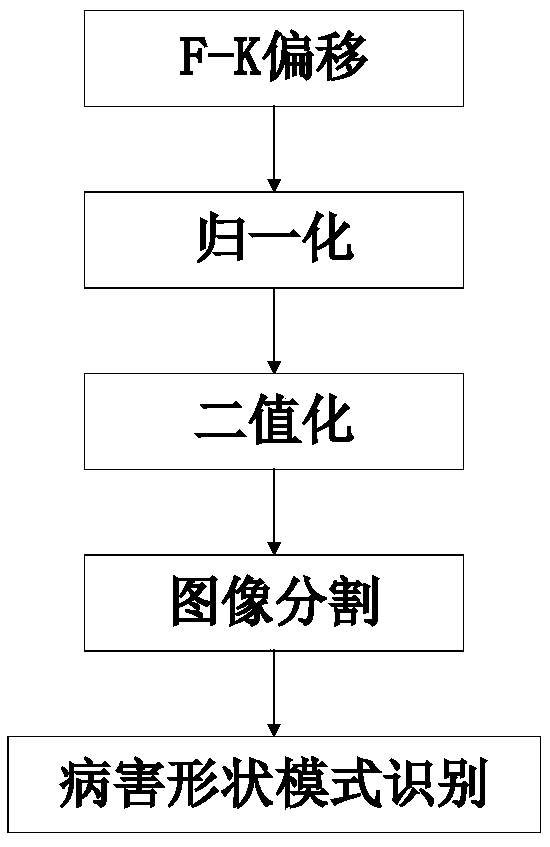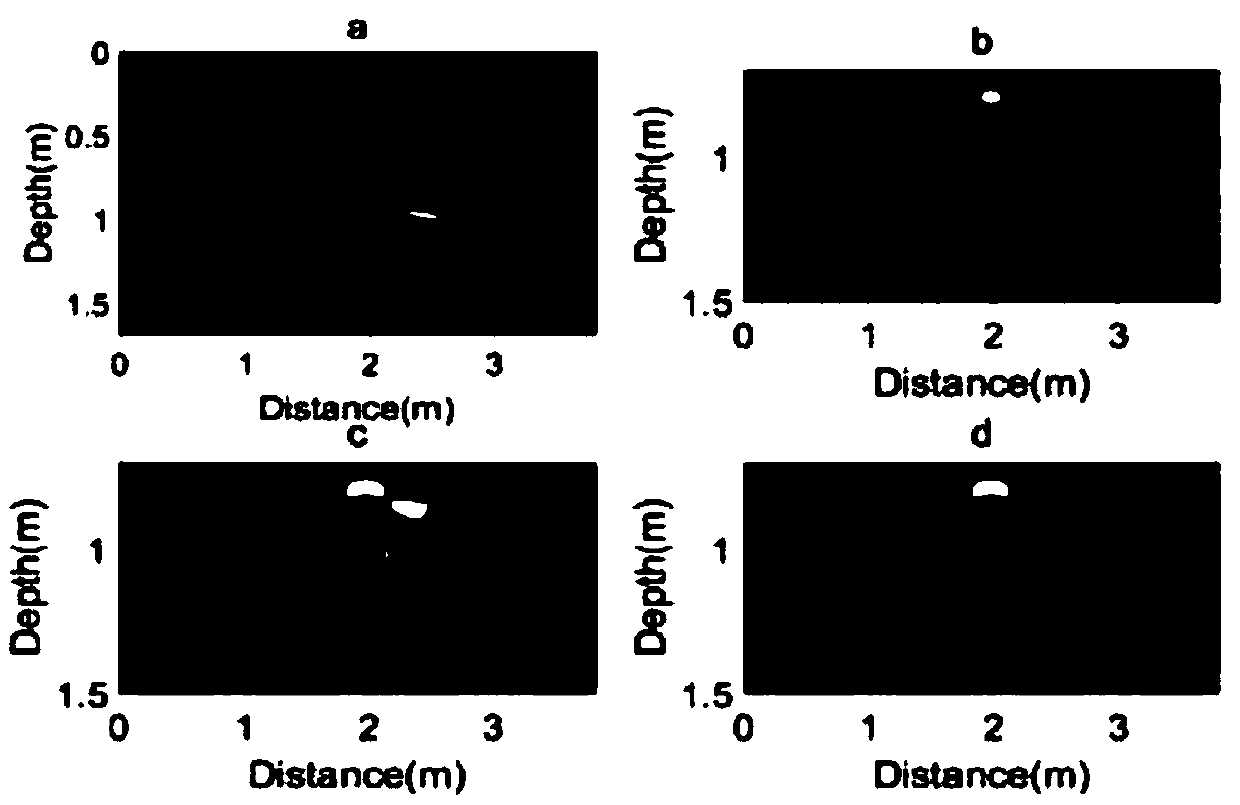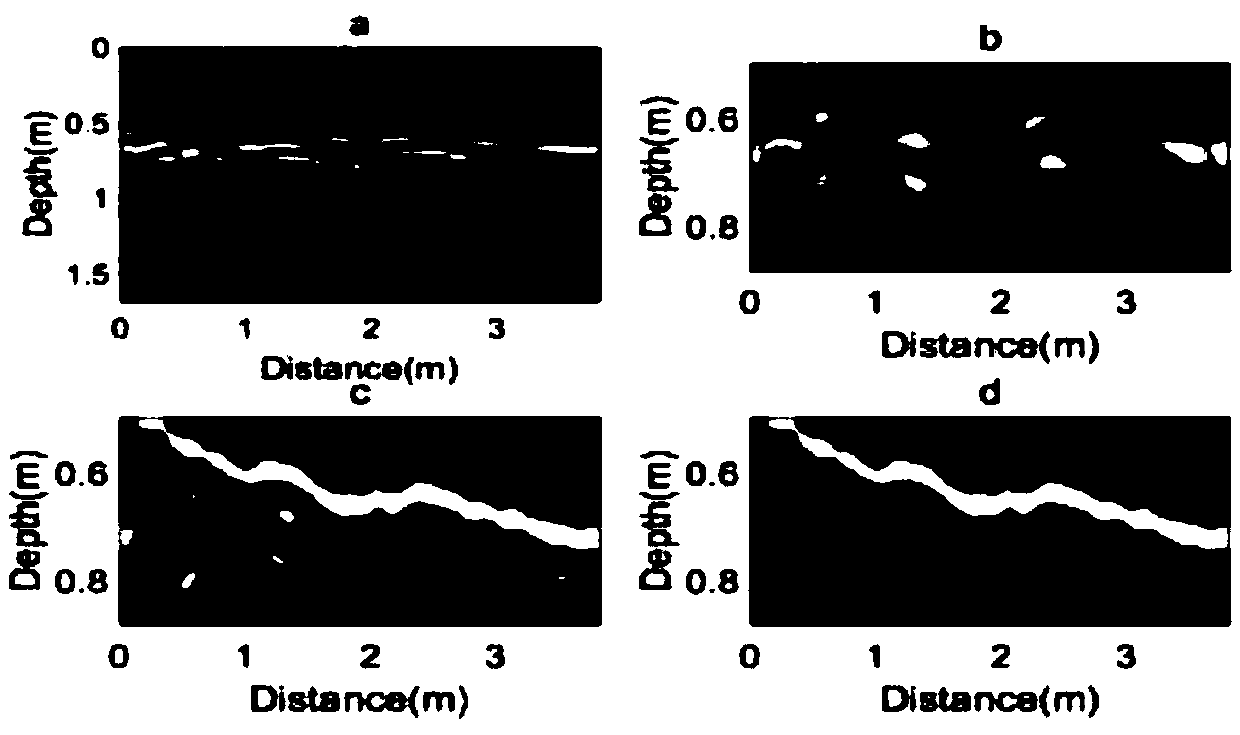A method for recognizing disease types in GPR images based on shape features
A shape feature and image technology, applied in the field of shape-based recognition of GPR image disease types, can solve problems such as large amount of calculation, difficulty in obtaining sample data, large manpower and time, and achieve great practical effects
- Summary
- Abstract
- Description
- Claims
- Application Information
AI Technical Summary
Problems solved by technology
Method used
Image
Examples
Embodiment Construction
[0032] Below in conjunction with embodiment the present invention is further explained.
[0033] A method for identifying GPR image lesion types based on shape features, comprising the steps of:
[0034] Step 1: For the GPR image with disease reflection waves, F-K migration is performed on the GPR image, that is, frequency-wavenumber domain migration, which is used to migrate the disease scattering wave. The principle is to concentrate the disease scattering wave energy to the disease The original position, restore the original shape and size of the disease, and get the GPR image matrix NI; figure 2 (a) and image 3 (a) Represents the original GPR scans of voids and voids, respectively, where the horizontal axis represents the horizontal distance and the vertical axis represents the depth. figure 2 (b) and image 3 (b) The images after F-K migration representing holes and voids, respectively. F_K migration restores the original shape and size of holes and voids.
[0035]...
PUM
 Login to View More
Login to View More Abstract
Description
Claims
Application Information
 Login to View More
Login to View More - R&D
- Intellectual Property
- Life Sciences
- Materials
- Tech Scout
- Unparalleled Data Quality
- Higher Quality Content
- 60% Fewer Hallucinations
Browse by: Latest US Patents, China's latest patents, Technical Efficacy Thesaurus, Application Domain, Technology Topic, Popular Technical Reports.
© 2025 PatSnap. All rights reserved.Legal|Privacy policy|Modern Slavery Act Transparency Statement|Sitemap|About US| Contact US: help@patsnap.com



